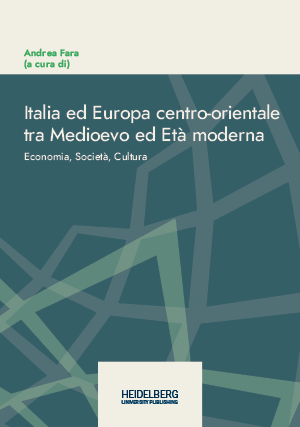How to Cite
License (Chapter)

This work is licensed under a Creative Commons Attribution-ShareAlike 4.0 International License.
Identifiers (Book)
Published
Italia ed Europa centro-orientale tra Medioevo ed Età moderna
Economia, Società, Cultura. Riflessioni a mo' di introduzione
Abstract Defining the historical processes that characterized Central and Eastern Europe in the Middle Ages as a simple ‘deviation’ or even ‘involution’ of similar processes starting from the model and results of Western Europe, or as evident ‘backwardness’ of the Central and Eastern Europe compared to Western Europe, appears superficial, or at least reductive. Although the stereotypical image of general backwardness of Central and Eastern Europe in the Middle Ages remains widespread today – and not only in the collective imagination, but also in many studies – the most recent researches allow us to overcome such a vision in a strict dualistic sense about political, economic and social fate of the two parts of the Continent. The principle of a fundamental and close dualism between the two parts of the Continent must be abandoned. It is necessary to widen the comparative research, highlighting not only the similarities that certainly existed, but also the particularities that defined the specific political, economic and social relations in Central and Eastern Europe in Middle Ages and Modern Period. Exactly from this comes the idea of this book, with the aim of presenting some results of the most recent research, focusing some territories and their economic, social and cultural relationships with the Italian Peninsula. The comparative aspect, though necessary, is not an end in itself; it makes it possible to highlight and better understand the political, economic and social complexity of the areas in question, as well as offering new food for thought.




